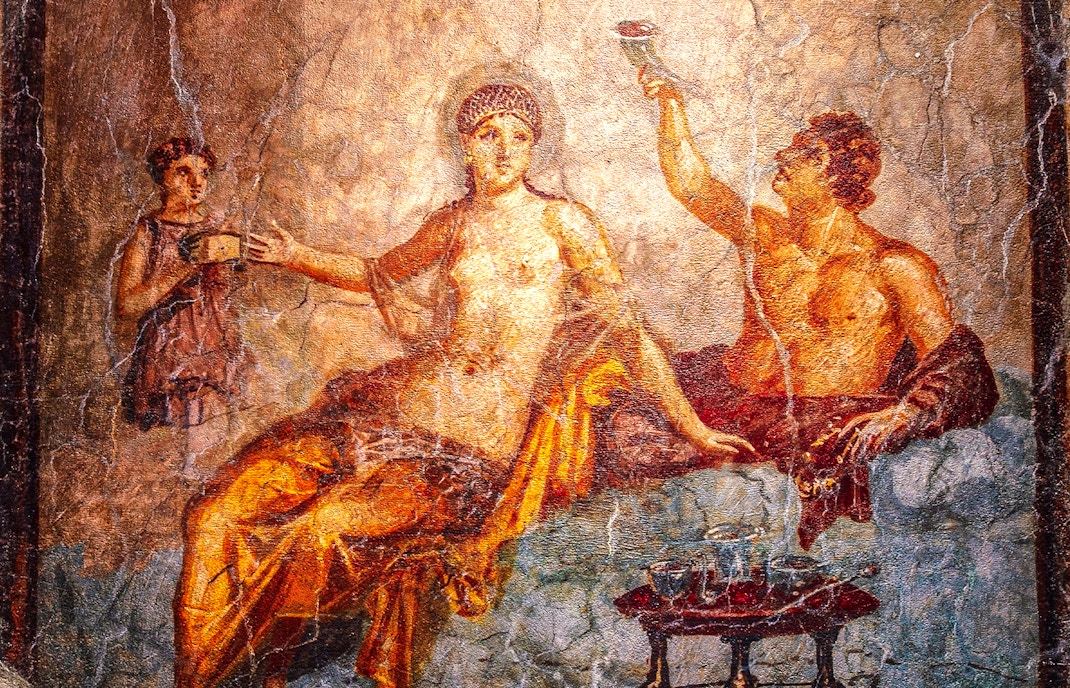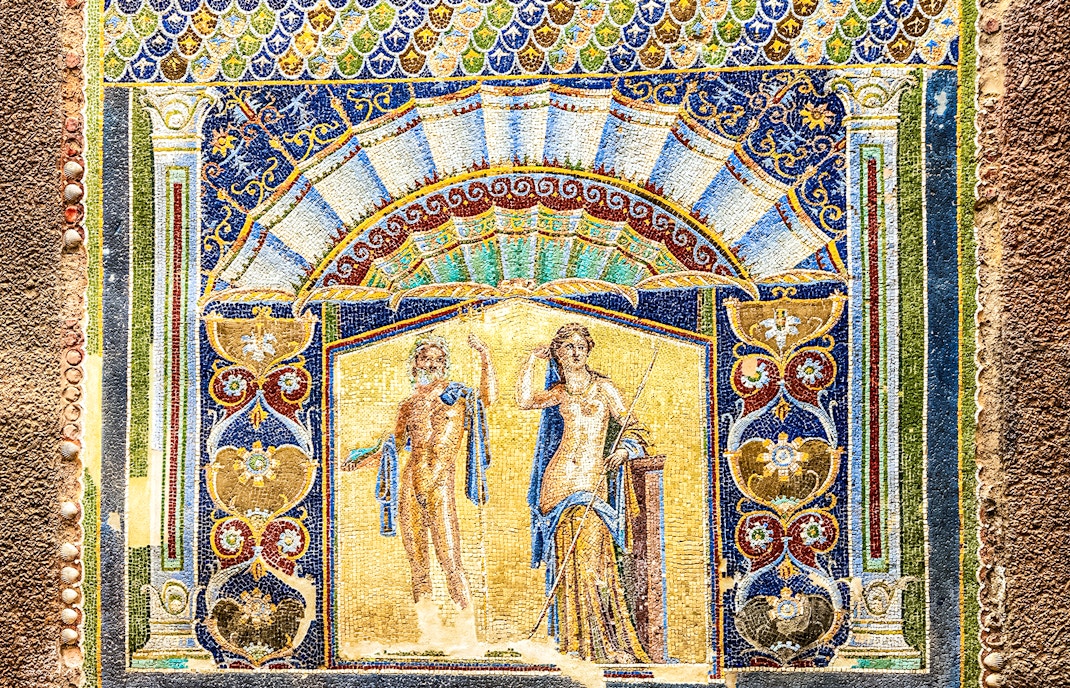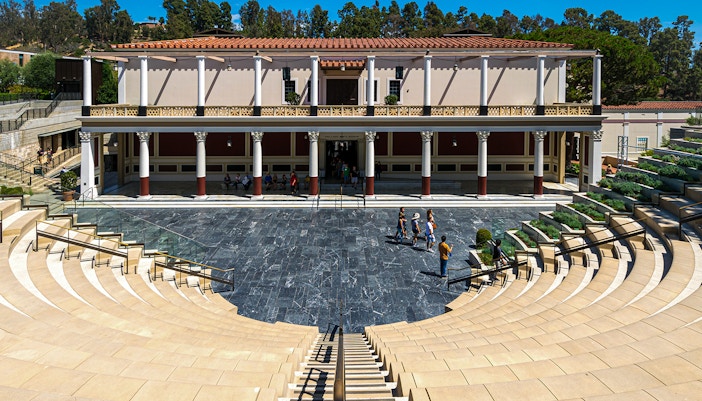The art of fresco involves applying paint and pigment on wet plaster. This plaster can comprise a mixture of slaked lime, wet sand and crushed marble to offer a fine finish. Once this mixture is semi dry, depressions, carvings and molds can be made to create door frames or elaborate ceiling motifs. This technique is called stucco.
Before this mixture is fully dry, incisions are made to create the outlines of the artworks. Paint is then filled in to create the final fresco. After the fresco is dry, a second coat of plaster is applied in pastel colors to add definition to the painting.
Where are frescoes found in Herculaneum?
Frescoes are typically found in the walls of residences at Herculaneum, especially the atrium. Notable houses that unearthed a significant number of frescoes include Villa of the Papyri, House of the Relief of Telephus, the Samnite House, etc.



















